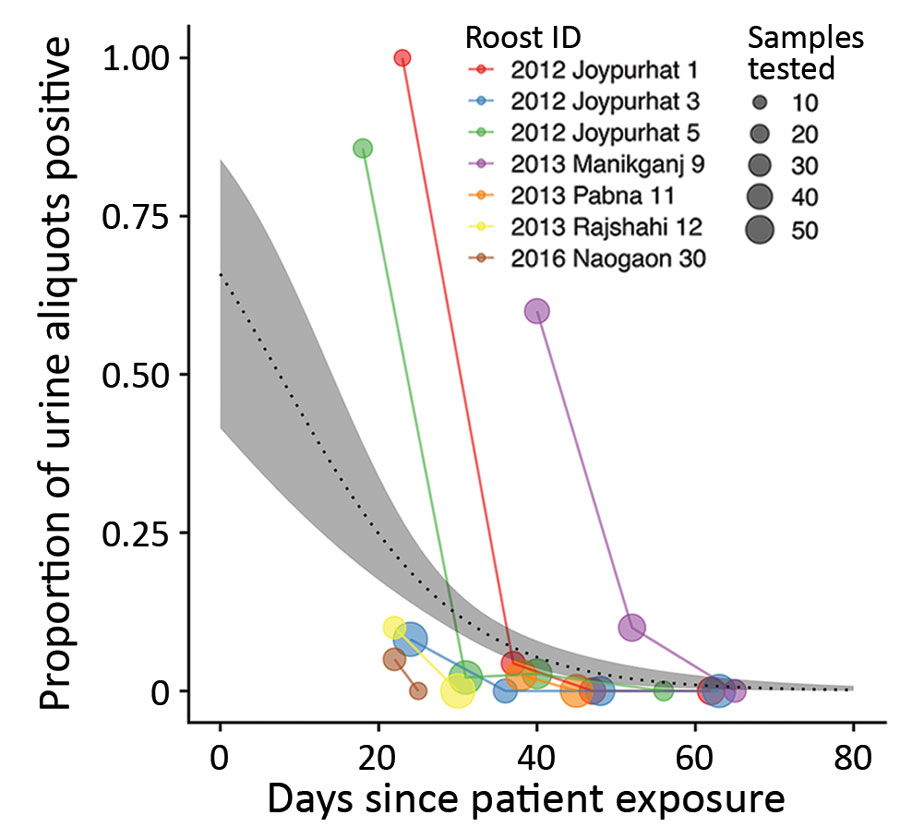Volume 28, Number 7—July 2022
Research
Nipah Virus Detection at Bat Roosts after Spillover Events, Bangladesh, 2012–2019
Figure 3

Figure 3. Results of screening of Pteropus medius bat roost urine aliquots for Nipah virus RNA, Bangladesh, 2012–2019. For each roost, the proportion of urine aliquots out of the total tested (indicated by the size of the circles) is aligned along a time axis of days since the first associated case-patient was exposed to Nipah virus in date palm sap. Time since patient exposure was either reported during the investigation or back-calculated as 7 days before reported symptom onset.
1These first authors contributed equally to this article.
Page created: April 27, 2022
Page updated: June 18, 2022
Page reviewed: June 18, 2022
The conclusions, findings, and opinions expressed by authors contributing to this journal do not necessarily reflect the official position of the U.S. Department of Health and Human Services, the Public Health Service, the Centers for Disease Control and Prevention, or the authors' affiliated institutions. Use of trade names is for identification only and does not imply endorsement by any of the groups named above.